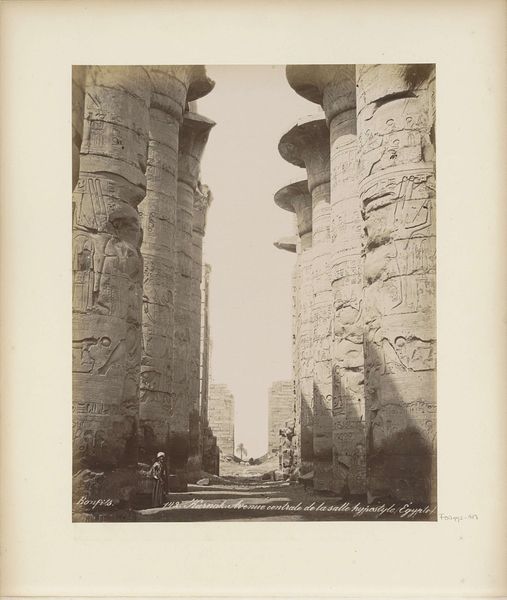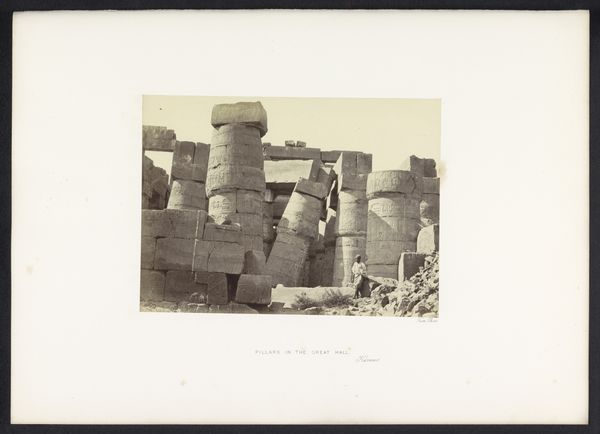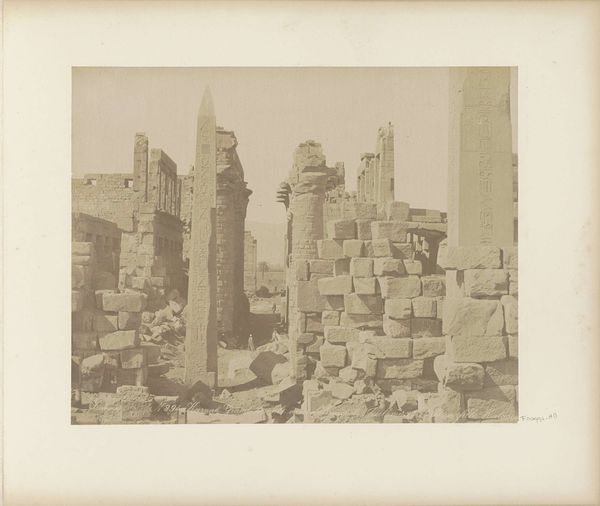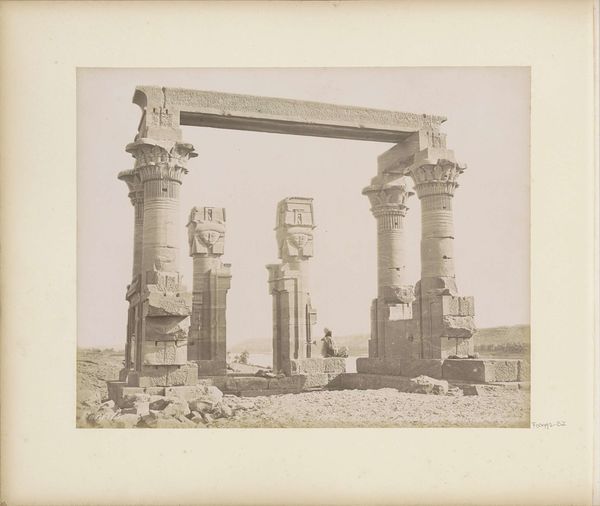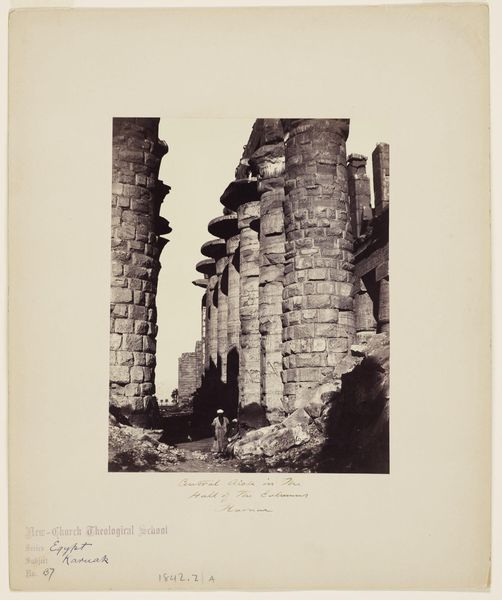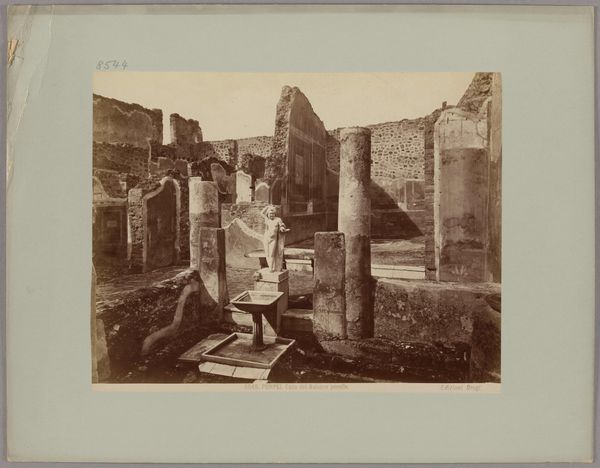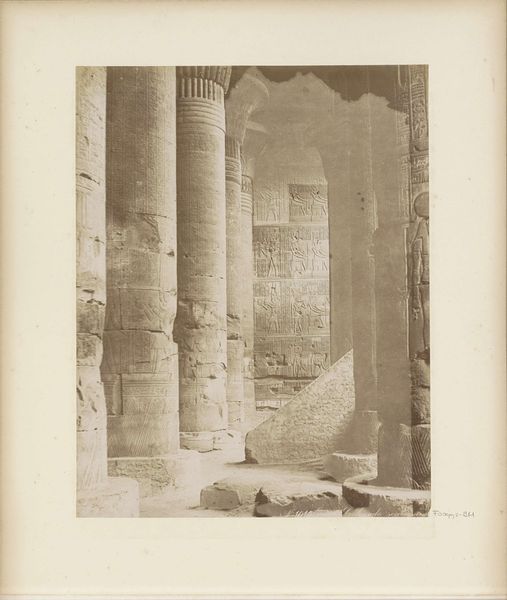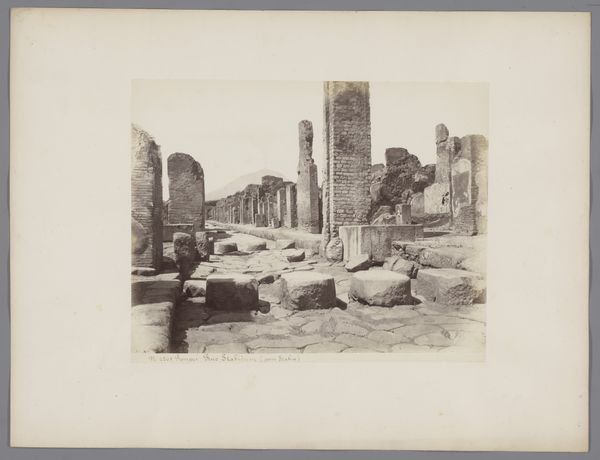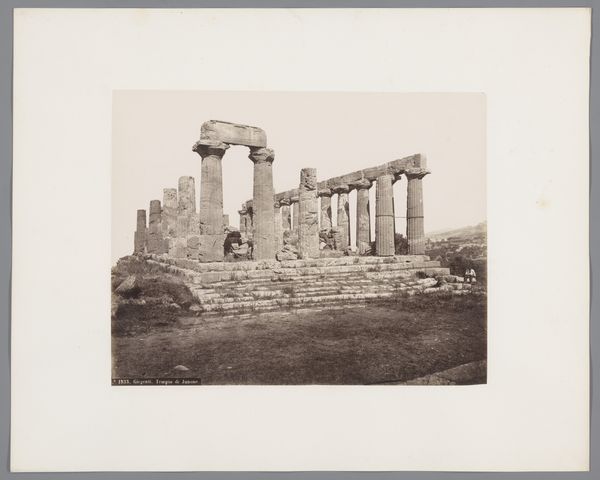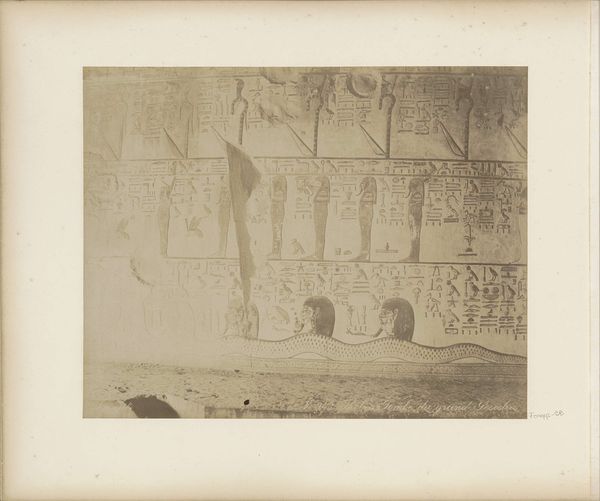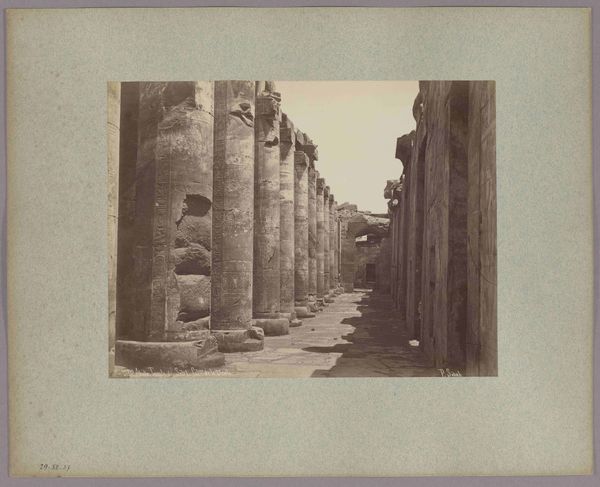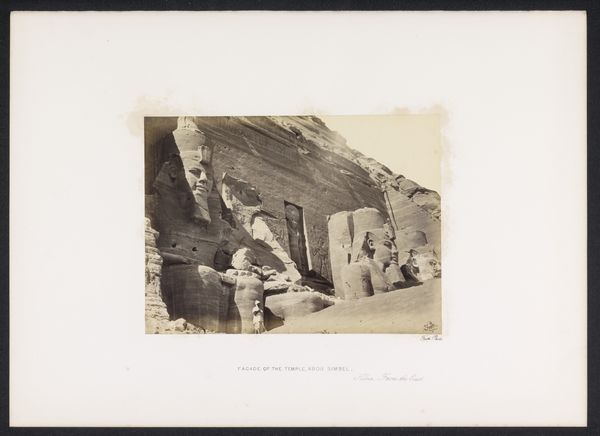
photography, gelatin-silver-print
#
landscape
#
ancient-egyptian-art
#
photography
#
ancient-mediterranean
#
gelatin-silver-print
#
cityscape
Dimensions: height 279 mm, width 220 mm
Copyright: Rijks Museum: Open Domain
Curator: This gelatin-silver print captures a view of the Tempel van Luxor. The photographer is Félix Bonfils, and it is part of the Rijksmuseum collection. Editor: What strikes me first is this kind of dreamlike quality – almost ghostly – in the massive stonework. It feels like a lost world caught in a faded memory. Curator: That resonates with Bonfils' production methods. His studio mass-produced photographs catering to a growing European interest in the Near East, employing local labor in the creation of these scenes. The soft focus aesthetic likely aided in capturing these ancient sites efficiently for this growing market. Editor: I imagine holding that very print, feeling the texture of the paper, and considering the journey it took from Egypt to my fingertips… Curator: Precisely. Think about the logistical operations needed: the transportation of photographic equipment to Egypt, the processing of materials on location, and then the distribution network that carried these images back to Europe for consumption. The very production of such images reinforced colonial power dynamics. Editor: Absolutely. But look how Bonfils composes the scene; it funnels our vision right down that corridor, where the scale diminishes, turning the grand into miniature…I bet it must have been amazing. Curator: Bonfils cleverly uses the architecture to guide the viewer. It really gives scale to this ancient place, the stark sun enhancing details and casting strong shadows and the human figure, strategically placed, adds to the picture as a focal point and reference point. Editor: It certainly reminds me that, when we look at such works, we should contemplate not only the beauty before us, but also the whole machinery of labor, and of making-visible which facilitated their existence in the first place! Curator: A pertinent consideration when we reflect on a photograph produced within, and reflective of, such a specific set of social and colonial circumstances. Editor: Well said. A truly remarkable piece that gets us thinking about production, value and how our gaze travels over centuries, capturing echoes of lives that we'll never live!
Comments
No comments
Be the first to comment and join the conversation on the ultimate creative platform.
